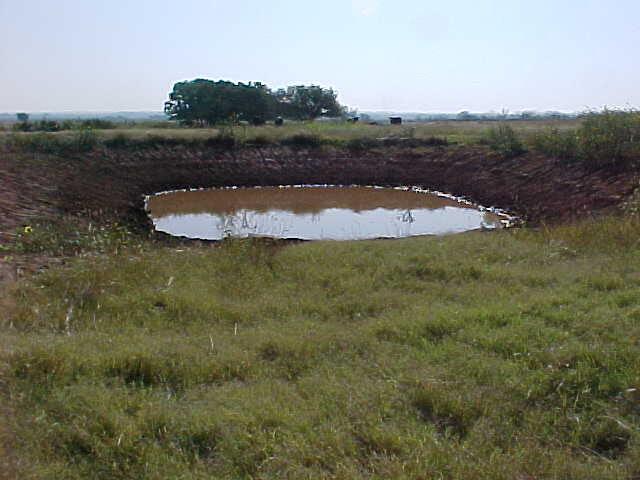There is something magical about owning a piece of land and having a beautiful farm pond, stocked with fish, shade trees, grass, and picnic tables all around. My generation remembers watching Andy Griffith and Opie fishing on television. I wish it was that simple.
Let’s roll back time to the late 1950s. The High Plains and southern Great Plains region were emerging from the worst drought since the Dust Bowl, some 20 years earlier. Farmers and ranchers who owned land with a year-round source of water were fortunate. Others were not as fortunate. Intermittent streams had dried up and wells had gone dry. Many had to haul every drop of water to their livestock day after day for extended periods of time. One logical idea was to build ponds to catch and hold water. In response, the government established programs that included cost sharing with the landowner to build ponds. Many ponds were built across the Plains, and they worked very well for many years.
Today, many of these ponds have become unusable for one reason or another. Landowners are faced with making decisions for having an adequate water supply to help them through the dry times at the least possible cost.
There are at least three categories of problem ponds. First, the pond may have silted in over time and the body of the pond is now full of soil. We didn’t know it at the same, but many problems like this could have been avoided by building a silt dam above the pond. Second, is the problem where the dam has been breached because a flood event exceeded the capacity of the pond and spillway. Third is the situation where the pond just does not hold water anymore. This could have happened because of a variety of reasons, but most likely the pond was unknowingly positioned over a gyp rock cavern or underground cavity of some type and the weight of the water simply broke through and drained the pond.
I remember one instance in northwest Oklahoma where a beautiful dam was built in a deep canyon. A hard 5-inch rain filled the pond one morning and it was beautiful sight to see, and the next morning it was dry. What are the options? I consulted one of my resource conservation engineer friends for advice. The cost of excavating a silted-in pond is very expensive.
The best option is to let it grass over and move somewhere else to build a dam or water storage structure. Second, in the case of a breached dam that does not hold water can be fixed but may also be very expensive, as the dam and spillway may require a lot of reworking and expansion to avoid a breach in the future. Third, the pond that just doesn’t hold water cannot usually be fixed.
One answer may be a “pit pond.” A pit pond is constructed by excavating the area where the pond is to be built and placing the soil on two or three sides. The idea is that you create a deep pool where the water can pass over the top in times of heavy rainfall, and still retain a pool or reservoir of water for livestock. Depending on your location or situation a pit pond can be as large or small as you might want to make it. A large pit pond might be as much as 200-feet long and 150-feet across and 8- to 10-feet deep or much smaller.
A pit pond may be more difficult to use for fishing and recreation; however, landowners who have constructed larger pit ponds have stocked them successfully with fish. In any event, it is important to contact your local conservation office and request technical and financial assistance, if it is available.
Tom Lucas can be reached at 580-727-4397 or [email protected].


